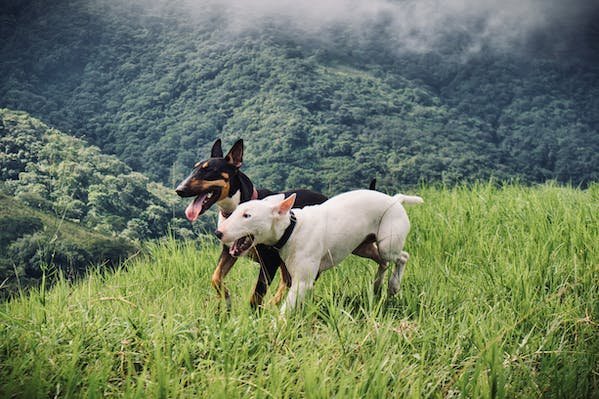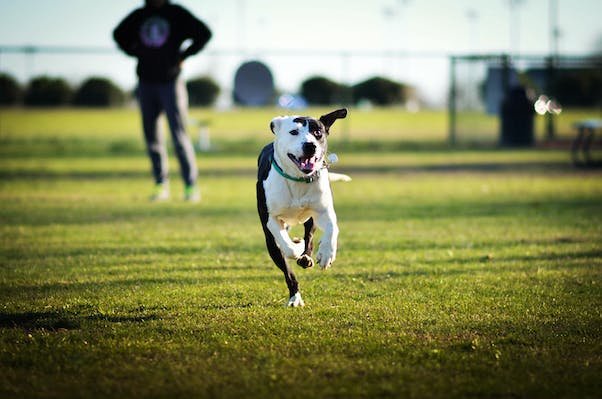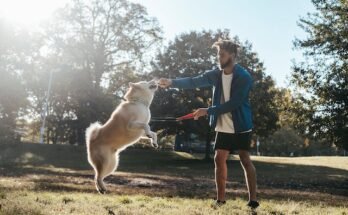In the world of canine companions, the Albino Doberman Pinscher stands as a beacon of loyalty, intelligence, and unyielding protectiveness. However, within this adored breed, there exists a rarity that’s as significant as it is misunderstood—the albino Doberman Pinscher.
This majestic and unique variation of the Doberman gene pool often raises questions and curiosity that deserve thorough exploration. From their historical import to health considerations, training, and the living experience with an albino companion, we dive into the complete story behind these special dogs.
Introduction
Albino Doberman Pinschers are a unique color variation that stands out, not just for their striking appearance, but for the mystery and myths that envelop their presence. Commonly misunderstood due to their distinct lack of pigmentation, albino Dobermans often face unjust stigmas despite being as lovable and loyal as their traditionally colored peers. This comprehensive guide will debunk the myths, unravel the truths, and celebrate the essence of albino Doberman Pinschers.
History and Origin
The Origins of the Doberman
The Doberman Pinscher, a breed known for its role as a protector and guardian, was first bred in Apolda, in Thueringen, Germany, around 1890. Karl Friedrich Louis Dobermann, a tax collector, sought a dog to aid his work, thereby birthing a legend. The traits needed were loyalty, strength, and the ability to instill fear. These dogs evolved into the sleek and noble breed that is recognizable today.
The Emergence of the Albino Gene
Throughout this evolution, a gene mutation has emerged that leads to reduced melanin production, resulting in a fully white coat, a pink nose, and pale blue or pink eyes. The albino gene in Doberman Pinschers is recessive, causing it to appear very rarely and catch the eye of dog enthusiasts and breeders who either treasure or shun these differences.

20 Facts About Albino Doberman Pinscher
Genetic Mutation: Albino Doberman Pinschers are the result of a genetic mutation that causes a lack of melanin, the pigment responsible for coloration in skin, hair, and eyes.
Coat Color: Unlike the traditional black and tan coloration of regular Dobermans, albino Dobermans have a white or cream-colored coat.
Eye Color: Albino Dobermans typically have light blue or pinkish eyes due to the absence of pigmentation in the iris.
Skin Sensitivity: Their lack of melanin makes their skin more sensitive to sunlight, making them prone to sunburn. Sunscreen or protective clothing may be recommended for outdoor activities.
Genetic Health Concerns: Albino Dobermans may be more susceptible to certain health issues, including vision problems and skin conditions, due to their genetic makeup.
Hereditary Trait: Albinism in Dobermans is inherited as a recessive trait, meaning both parents must carry the gene for there to be a chance of producing albino offspring.
Temperament: Their personality traits are generally the same as those of regular Dobermans, known for being intelligent, loyal, and protective.
Rarity: Albino Dobermans are relatively rare compared to the standard-colored Dobermans, making them more sought after by certain individuals.
Controversy: Some controversy exists within the Doberman community regarding the breeding and ownership of albino Dobermans due to potential health concerns.
White Doberman Myth: There is a common misconception that white Dobermans are albinos; however, true albinism involves a specific genetic mutation that affects pigmentation, while white Dobermans have a different genetic mutation causing their coloration.
Rescue Organizations: There are rescue organizations specifically dedicated to albino Dobermans, helping find homes for those in need.
Grooming Challenges: White coats can be more prone to staining, so regular grooming may be required to maintain their appearance.
Exercise Needs: Albino Dobermans, like their standard counterparts, require regular exercise to keep them healthy and happy.
Trainability: Known for their intelligence, albino Dobermans are highly trainable and often excel in obedience training.
Popularity in Shows: Albino Dobermans are not typically eligible for conformation shows as per breed standards, which often favor the traditional black and tan coloration.
Discrimination in Shows: Some argue that discrimination against albino Dobermans in dog shows is unfair, as it doesn’t consider their abilities and temperament.
Vocalization: Like regular Dobermans, albino Dobermans may be prone to vocalization, making them effective guard dogs.
Adaptability: Despite their sensitivity to sunlight, albino Dobermans can adapt well to different living environments, including both apartments and houses.
Companionship: Albino Dobermans can form strong bonds with their owners and thrive in a loving and supportive family environment.
Legal Restrictions: In some regions, there may be legal restrictions or breeding guidelines regarding albino Dobermans due to concerns about their health and well-being.
Also Read: White Doberman Pinscher: A Complete Guide
Physical Characteristics
Albino Doberman Pinschers boast a coat of pure white, unlike the standard black and tan variations. Their eyes, typically blue or pale pink, depict a soulful gaze, holding glimmers of the strength and wisdom the breed is known for. While the albino trait affects their physical appearance, it does not alter their core characteristics. They retain the athleticism and sleek build that aids their role as strong, agile protectors.
Health Considerations
Vision Impairments
The lack of pigment in their eyes can lead to vision impairment, with conditions like photophobia, nystagmus, and reduced visual acuity being common side effects. Owners must be vigilant and considerate of their albino Doberman’s sight, making environmental adjustments to enhance their quality of life.
Skin and Sun Sensitivity
Beyond the eyes, the albino Doberman’s skin is also highly sensitive, making it prone to sunburn and skin cancers. Owners should take extra precautions, such as sunscreen application and limiting sun exposure during peak hours, to protect their furry friends from UV rays.
Albinism-Associated Health Issues
Albinism can be linked with other health concerns like congenital deafness, autoimmune diseases, and, in some cases, a predisposition to certain cancers. Regular vet check-ups and a consistent, healthy lifestyle can help monitor and manage these potential risks.
Training and Socialization
Begin training and socialization as early as possible with your albino Doberman Pinscher. Socialization is key to teaching your dog proper behavior and interaction with people and other animals. Training should be consistent, firm, fair, and positive; showing them respect and leadership will help shape a well-rounded and confident companion.
Myths and Misconceptions
Addressing myths and misconceptions is crucial when it comes to the welfare of albino Doberman Pinschers. Their natural traits and personality are often overshadowed by untruths. It is important to remember that color does not dictate character, and each Doberman, albino or not, should be evaluated as an individual.
Living with an Albino Doberman Pinscher
Daily Care
Owners of albino Doberman Pinschers should incorporate a few additional care steps into their daily routine. This includes wiping their eyes to prevent tear staining and offering a diet rich in nutrients that support overall health. Regular grooming is also essential to keep their pristine white coat shining and healthy.
Exercise Needs
Dobermans, including albinos, are high-energy dogs that require regular exercise to keep them both mentally and physically stimulated. They excel at various activities, from jogging to advanced training courses; just be mindful of their specific needs and adapt exercises based on weather and skin sensitivity considerations.

Grooming
Beyond keeping their coat and skin healthy, grooming should be an enjoyable experience for your albino Doberman. Regular grooming time will not only help control shedding and maintain cleanliness but also serve as another socialization opportunity that strengthens the bond between dog and owner.
Conclusion
The world of albino Doberman Pinschers is a complex and intriguing one. From their genetic makeup to the daily joys and challenges of living with one, these dogs offer a unique and rewarding experience for those willing to understand and embrace their differences. It’s a journey of learning, compassion, and appreciation for the richness that diversity brings, even in the pet world.
FAQs
Are albino Doberman Pinschers friendly?
Yes, with proper training and socialization, albino Dobermans can be just as friendly, affectionate, and loyal as any other Doberman.
Do albino Doberman Pinschers have health problems?
The albino gene is associated with some health issues, particularly those related to vision and skin sensitivity. Regular vet check-ups and a healthy lifestyle are crucial for maintaining their well-being.
Are albino Doberman Pinschers good pets?
Yes, albino Dobermans can make excellent pets for the right owners who understand and are willing to accommodate their specific needs and care requirements.
How rare is an albino Doberman Pinscher?
Albino Dobermans are a rarity, even within the already selective Doberman breed. Their unique coloring and associated characteristics make them a distinctive treasure for those fortunate enough to share their lives with one.
As we close the chapter on our guide to albino Doberman Pinschers, it stands as a testament to the beauty and complexity of these wonderful dogs. Gifted with a striking appearance and a rich history, they deserve to be recognized for the remarkable creatures they are. For those who open their hearts to these special animals, the bond formed is beyond color; it is a connection that speaks to the core of canine companionship, love, and shared journeys.




